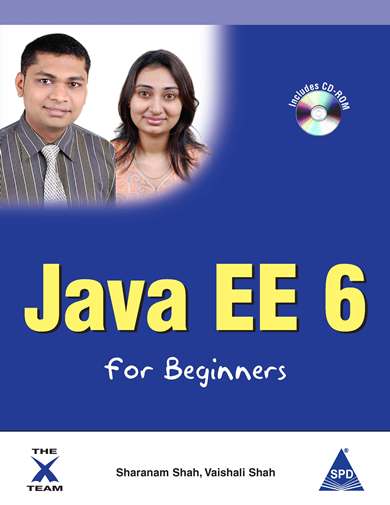
ISBN 13: 978-81-8404-939-8
This book aims serving students, developers, technical leads and professionals who wish to learn server side, enterprise application development, using Java EE 6.
This book explores Java EE 6 and systematically illustrates its various specifications with plenty of real world examples with complete code spec and diagrams to make it easier to follow. Whether you are a beginner or an experienced Enterprise developer, you should find this book, a valuable and accessible knowledge base for creating Enterprise solutions.
What You’ll Learn?
Reading this book, application developers will get an insight into how Enterprise/Web applications are structured developed and executed using:
NetBeans 6.8 as the IDE
Sun Glassfish Enterprise Server [v3] as the Application Server
The presentation logic of the application
Java Servlets, JavaServer Pages, JavaServer Facesas the Web Tier components
Facelets and JavaServer Pages as the View Definition Languages for JSF The business logic of the application
Enterprise JavaBeans as the Business Tier component
Session Beans – Stateless, Stateful, Singleton
Message Driven Beans
Interceptors to add functionality to already existing business methods
The persistent storage layer of the application
MySQL 5 as the EIS Tier
Java Persistence API [JPA] 2.0 as the Standard Interface
JPA is a Specification and a standard interface which requires an implementation i.e. an ORM tool such as Hibernate, TopLink, OpenJPA, EclipseLink or any other ORM that implements JPA. It defines the interface that an implementation has to implement.
Hibernate 3 as the Implementation [Object Relational Mapping tool]
A popular, powerful and a free, open source Object Relational Mapping library for the Java programming language which makes the application portable to all the SQL databases supported by Hibernate.
Struts 2 as the Application Development FrameworkAn open source Java framework used for building Web applications based on the Servlet and JavaServer Pages [JSP] technologies.
Java API for XML Web Services [JAX-WS] as the technology for building web services
JavaMail as the API for dispatching emails
Calendar Based Timer Services as the Scheduler for creating CRON-like jobs
JNDI as the API to access a variety of naming and directory services
JTA as the API for managing transactions
Edition: First
Downloads
THE TOPICS COVERED IN THE BOOK
Java EE
Introduction To Java and Java EE, Java EE 6 Architecture, Setting Up NetBeans IDE 6.8
Java Servlets 3.0
Introduction, Servlet API And Lifecycle, Working With Servlets, Working With Databases, Cookies, Session, Filters, Request Dispatcher, Annotations, HttpOnly Cookies
JavaServer Pages 2.1
Introduction, Getting Started, Action Elements, Implicit Objects, Scope, Expression Language, JSP Standard Tag Libraries
JavaServer Faces 2.0
Introduction, Getting Started, JSF Components, Managed Beans, Navigation, Converters and Validators, Facelets
Enterprise JavaBeans 3.1
Introduction, Getting Started, Session Beans – Stateless/Stateful/Singleton, Message Driven Beans, Interceptors, Asynchronous Invocation, Calendar Based Timer Services, No-Interface View
Advanced Topics
Web Services, JavaMail, JNDI, Enterprise Application Development, Listener, Java Transaction API
CONTENTS OF THE CD-ROM
- Setup files for NetBeans IDE 6.8
- MySQL 5.1
- MySQL Connector/J 5.1, JDK 6
- Struts 2.1
- Hibernate 3.5
- Source code for every example in this book